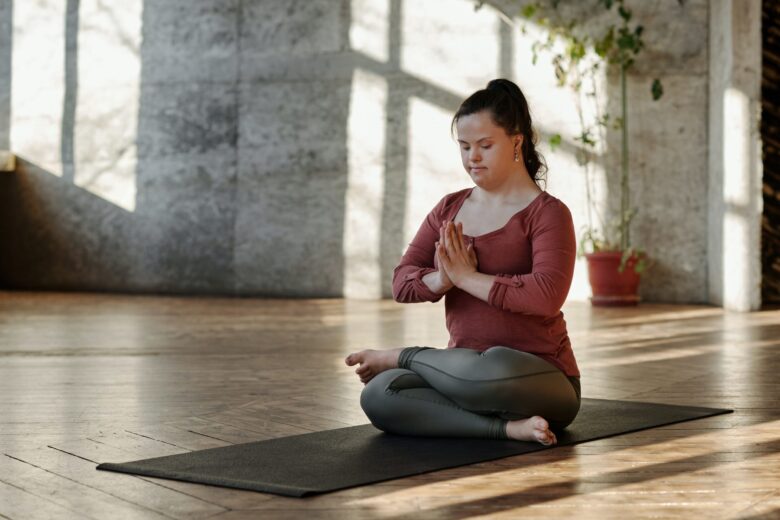Stress is a natural part of life, but when it becomes overwhelming, it can negatively affect both your mental and physical health. Fortunately, there are breathing exercises that can help reduce stress and anxiety, promoting a sense of calm and relaxation. Breathing techniques are simple, effective tools you can use anytime to soothe your mind and body. In this article, we’ll explore a few powerful breathing exercises that can help instantly lower stress and bring a sense of tranquility.
Deep Belly Breathing (Diaphragmatic Breathing)
Deep belly breathing, also known as diaphragmatic breathing, is one of the most effective ways to relax and calm the mind. By focusing on breathing deeply into your diaphragm rather than shallowly into your chest, you activate the body’s parasympathetic nervous system, which helps counter the stress response.
To practice deep belly breathing, sit or lie down comfortably. Place one hand on your chest and the other on your abdomen. Inhale deeply through your nose for about four seconds, allowing your belly to rise as you fill your lungs with air. Hold the breath for a moment, and then slowly exhale through your mouth for about six seconds, allowing your belly to fall. Repeat this process for several minutes, focusing on the rise and fall of your abdomen. This simple technique helps promote relaxation by activating the body’s natural calming mechanism.
4-7-8 Breathing
The 4-7-8 breathing technique, developed by Dr. Andrew Weil, is a calming method that involves inhaling for four seconds, holding the breath for seven seconds, and exhaling for eight seconds. This simple technique can instantly reduce anxiety, promote a sense of calm, and help regulate your nervous system.
To practice 4-7-8 breathing, sit in a comfortable position with your back straight. Close your eyes and exhale completely through your mouth. Then, inhale quietly through your nose for a count of four. Hold your breath for a count of seven. Exhale completely through your mouth for a count of eight. Repeat the cycle for several rounds. This technique is especially helpful when you’re feeling anxious or unable to sleep.
Box Breathing (Square Breathing)
Box breathing, also called square breathing, is a technique that involves inhaling, holding, exhaling, and holding the breath again—all for equal counts. This exercise helps slow the breath, calm the nervous system, and improve focus, making it an effective technique for stress relief.
To practice box breathing, sit with a straight posture and close your eyes. Inhale slowly through your nose for a count of four. Hold your breath for a count of four. Exhale slowly through your mouth for a count of four. Hold your breath again for a count of four. Repeat this process several times, focusing on the even rhythm of your breath. This simple, structured technique helps calm the mind and release physical tension.
Alternate Nostril Breathing (Nadi Shodhana)
Alternate nostril breathing, or Nadi Shodhana, is a calming yoga practice that involves breathing through one nostril at a time, alternating between nostrils. This technique is said to balance the body’s energy and promote a sense of calm and mental clarity. It’s especially helpful for reducing anxiety and clearing mental blockages.
To practice alternate nostril breathing, sit in a comfortable position and close your right nostril with your right thumb. Inhale deeply through your left nostril. Close your left nostril with your right ring finger and release your right nostril. Exhale through the right nostril. Inhale deeply through your right nostril, close it, and release your left nostril. Exhale through the left nostril. This completes one cycle. Repeat for several cycles, focusing on your breath and the sensations of each inhale and exhale. This exercise helps create a peaceful, balanced state of mind.
3-Part Breath (Dirga Pranayama)
The 3-part breath, or Dirga Pranayama, is a breathing technique used in yoga to increase lung capacity, calm the mind, and reduce stress. It involves breathing into three distinct areas of the body: the belly, the ribcage, and the chest. This type of breathing helps expand the lungs fully, promoting relaxation and stress relief.
To practice the 3-part breath, sit comfortably with your spine straight. Inhale deeply through your nose, filling your belly first, then your ribcage, and finally your chest. Exhale slowly, releasing the breath in the reverse order: chest, ribcage, and belly. Continue this pattern for several minutes, focusing on the smooth, even flow of your breath. This exercise encourages full oxygen exchange and helps calm both the body and mind.
Lion’s Breath
Lion’s breath is an energizing breathing technique that helps release tension, particularly in the face, jaw, and neck, which can accumulate during times of stress. It’s a great way to release physical and emotional tension, and it can help reduce feelings of frustration and anxiety.
To practice lion’s breath, sit comfortably or kneel on the floor. Take a deep breath in through your nose, then open your mouth wide and stick out your tongue as you exhale forcefully, making a “ha” sound. Try to make the exhale as strong and complete as possible. Repeat this several times, allowing yourself to release any tension or frustration with each exhale. This exercise not only reduces stress but also invigorates the body and clears the mind.
Bhramari Breathing (Bee Breath)
Bhramari, also known as “bee breath,” is a calming technique where you make a humming sound while exhaling. The vibration of the sound helps soothe the nervous system and calm the mind, making it an excellent choice for stress and anxiety relief.
To practice Bhramari, sit in a comfortable position with your eyes closed. Take a deep breath in through your nose. As you exhale, produce a low, steady humming sound, similar to the buzzing of a bee. Continue to hum throughout your exhale. Repeat this several times, focusing on the vibrations and the calming effect of the sound. This practice helps release tension in the body and clears the mind, providing a peaceful and grounding experience.
Conclusion
Breathing exercises are simple yet powerful techniques that can help lower stress levels and reduce anxiety in moments of discomfort. Whether through deep belly breathing, the rhythmic flow of box breathing, or the calming vibrations of Bhramari, these exercises can instantly calm the mind and restore balance. With regular practice, breathing techniques not only provide immediate relief but also help build resilience against stress over time. Incorporate these practices into your daily routine to foster a sense of relaxation, mental clarity, and peace in your life.




